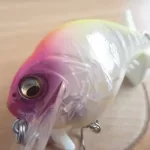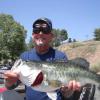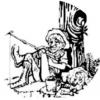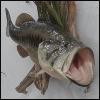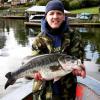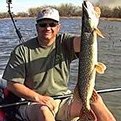Leaderboard
-
in all areas
- All areas
- Images
- Image Comments
- Image Reviews
- Albums
- Album Comments
- Album Reviews
- Topics
- Posts
- Stories
- Story Comments
- Story Reviews
- Classified Ads
- Classified Ad Comments
- Classified Ad Reviews
- Records
- Record Comments
- Record Reviews
- Websites
- Website Comments
- Website Reviews
- Status Updates
- Status Replies
-
Custom Date
-
All time
February 2 2011 - April 20 2024
-
Year
April 20 2023 - April 20 2024
-
Month
March 20 2024 - April 20 2024
-
Week
April 13 2024 - April 20 2024
-
Today
April 20 2024
-
Custom Date
04/02/2016 - 04/02/2016
-
All time
Popular Content
Showing content with the highest reputation on 04/02/2016 in all areas
-
3 points
-
Every time I have called they have answered, I believe it is Chris and he always talks to me for awhile and always answers my questions, great guys and they make a fantastic product. I highly recommend their products. We have two of their shooting star systems and we have four of their vises and a few molds. Dan2 points
-
ALso dont forget when adding salt(which is white) you need to add more color... I got the blue fleck down perfect for the senkos but now I cant find the recipe, I will dig it up... The other day I was playing around and slipped and came out with an Identicle junebug color for just worms with out salt... 40 drops of black grape and 55-60 drops of red(lure craft colors shaken very well ) in 1.5 cups of m-f plastic Delw1 point
-
Why would you ever wanna add actual motor oil (or any unscented oil based product) to a lure? I don't understand why you couldn't just use a regular colorant made for that purpose to get the color you are looking for.1 point
-
1 point
-
please tell me the do's and dont's for making lead jigs..im new and looking to get a 3/4 oz--1 oz. round head mold....i have about 15lbs of lead in a block someone formed and left behind 20 yrs ago when i moved into my house...id like to put it to use now.....im fishing the detroit river for walleyes and its loaded with snags...so we use alot on some days..besides a mold and melting sorce what else needs to be done....? and how do you do it..i heard someone say it needs to be cleaned? this could be tire weight lead I'm not sure....I use it for a door stop in the garage..im thinking thats what it has been used for all along ..1 point
-
Be sure to take all the safety steps so you don't wind up with lead poisoning, or contaminate you house. I'm sure that info is here somewhere, in the search feature.1 point
-
1 point
-
Boss just talked with Chris Friday and ordered some production molds. These folks are head and shoulders above most mold makers out there. I'm not talking necessarily about quick reply's or whatever (although we've never had a problem getting them) but they have some of the best molds we've ever had produced for us. Great folks, great company, great molds!1 point
-
My toughest pattern to paint is probably a real bluegill. 11-12 different colors, plus the layering. My most productive is what I called the "Heart Attack." It's a very simple white bait with a red EKG graph painted on it... (2nd from bottom)1 point
-
1 point
-
1 point
-
All one needs to do is google "spinnerbait component sizing chart" or "spinnerbait parts sizing chart" or anything similar and you will find a bunch. Unfortunately a lot will be different because we all like our spinnerbaits to run differently. The size of the clevis is dependent on your wire size, .035 I like using a size 3, a size 2 I only use for .032" wire on 1/4oz spinnerbaits and if I use .035 wire I use the 3 on those as well. The beads would be the same thing, 5/32 for 1/4oz to 3/4oz. Split rings aren't a concern, I use Worth swivels and they have their own split ring that comes with them and most swivels will come with split rings so I don't even worry about those. If you are making safety pin type spinnerbaits, use the stirrup clevis, the folded works but it much better suited to in-lines and on regular fishing line. You didn't ask but I assume you know what size blades you want to run, I tend to go 1 size under most charts but there are a few that are similar to my sizing but for me the sizes I use come from experience, I like to reel my spinnerbaits fast so smaller blades than normal help keep the bait from leaning to one side or the other. Good luck.1 point
-
Trying to understand this 'Balance Beam' Ben,, --do you have a slot down the centre of the lure,?,, CONFUSED here. Pete1 point
-
Should have used the old thread, this one doesn't make any sense. Dave1 point
-
DiametricD - regarding Ben's balance method; this is done without the ballast fitted, but everything else in place. This is inconvenient I know, but the idea is to get CoG nice and tight with the ballast, for a wide waggle. Dave1 point
-
I guess I was having a good day lol. That black and blue combo is a great color. I always have that combo in my box.1 point
-
Lure parts on line list the needed components to build different size spinner baits. They recommend 3/8 or 1/2 oz size for the size wire you mentioned. # 7 crane swivel, #2 ball bearing swivel, #5 Colorado blade, # 4 1/2 willow leaf blade, #3 stirrup clevis, 5/32 metal beads, #2 or 3 shaft blade colorado, #3 or 3 1/2 willow leaf shaft blade. Mix and match as you see fit. Good luck. This was from their 2014 cat. as I didn't look long enough to find their current cat.1 point
-
Interesting facts to support Mark's observations: *As a general rule, the eyes of fish species that live in relatively clear water tend to distinguish a wider spectrum of colors than those that live in dirty or tannin stained waters. Fish that are adapted to the latter conditions don't get exposure to blue and violet wavelengths and tend to be adapted to the spectral ranges of red-orange and yellow-green (chartreuse). *Largemouth bass, perch, bluegill, crappie and walleye are most sensitive to light wavelengths in the 590 - 650nm range (red-orange) and are also sensitive to the 510 - 570nm range (yellow-green). Keen observation on Mark's part. I was the probably only white kid in Mesquite Texas who watched Soul Train back in the 70's.....Sooooooul Train, with your host Don Cornelius!! Afro's and disco1 point
-
I've used Createx paints to put a pattern on lead head spinner baits with great results. Base coat with opaque white then paint whatever pattern you want. Heat setting is necessary with Airbrush colors, not so much with Wicked colors. I use Devcon epoxy thinned down with denatured alcohol to clear coat the head. Be sure to mix the two part epoxy well before adding denatured alcohol. I use a disposable plastic shot cup for the mix and an an eyedropper to add alcohol to the mix then stir it in thoroughly. As for the bubbles, just cup your hand over the shot cup and exhale into it a few times. Just like magic the bubbles will rise to the surface and disappear. Apply the epoxy sparingly so as to avoid blobs on the hook, hook eye or wire. An LED desk lamp will show any voids in the epoxy when held at angles to the light. I normally put the lure on a turner for about 15 minutes then once the epoxy is levelled and set, hang the lure in a dehydrator at about 95 -105 degrees for 30-45 minutes. Comes out hard as a nail and looking good. I'm sure there are other methods that work just as well...just sayin' this one works for me. Keep thinking good thoughts!1 point
-
Silicone. I think for their most popular bait they now have 40 flats of 30 each. (Yes, a full batch is 1200 baits.) Anyway, my point is there is no substitute for number of cavities regardless of what mold material you choose.1 point
-
1 point
-
You can tie on a single strand of monofilament onto the hook shank if that would work or you can double over the mono and tie on the tag ends. Just a thought.1 point
-
I pour a lot of line-thrus for a west coast company. We use ribbed nickel plated lead inserts in ours. I don't have any trouble with them pulling out or turning the plastic colors.1 point
-
Nailed it! And of course, the more you pour, the hotter the molds get.......and the longer your wait time. Solution?? Talk your wife into investing in more molds! lol1 point
-
I have never had one bend. It is still a lite wire. Are you wanting it to bend on purpose or are you bending them and not wanting to?1 point




